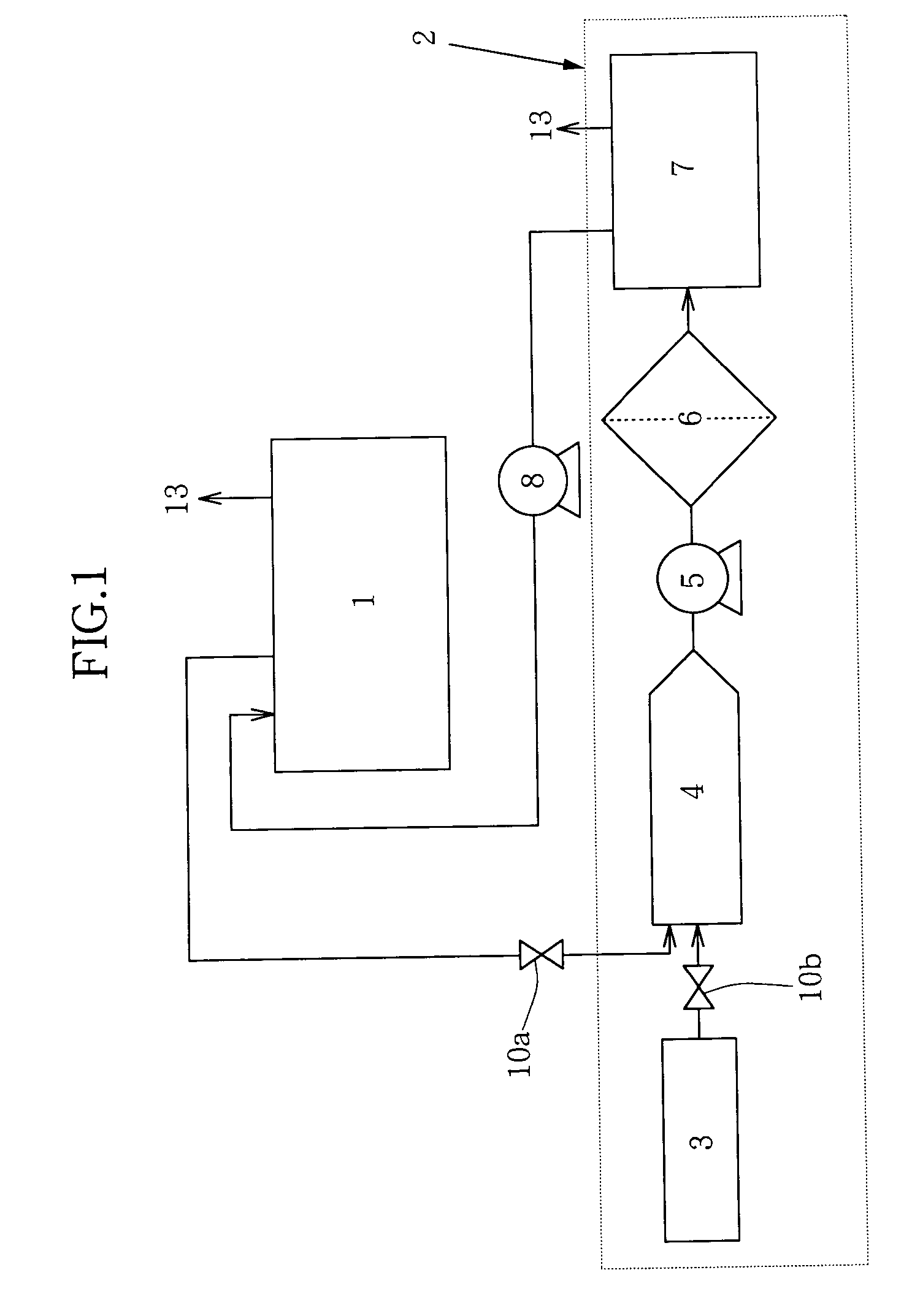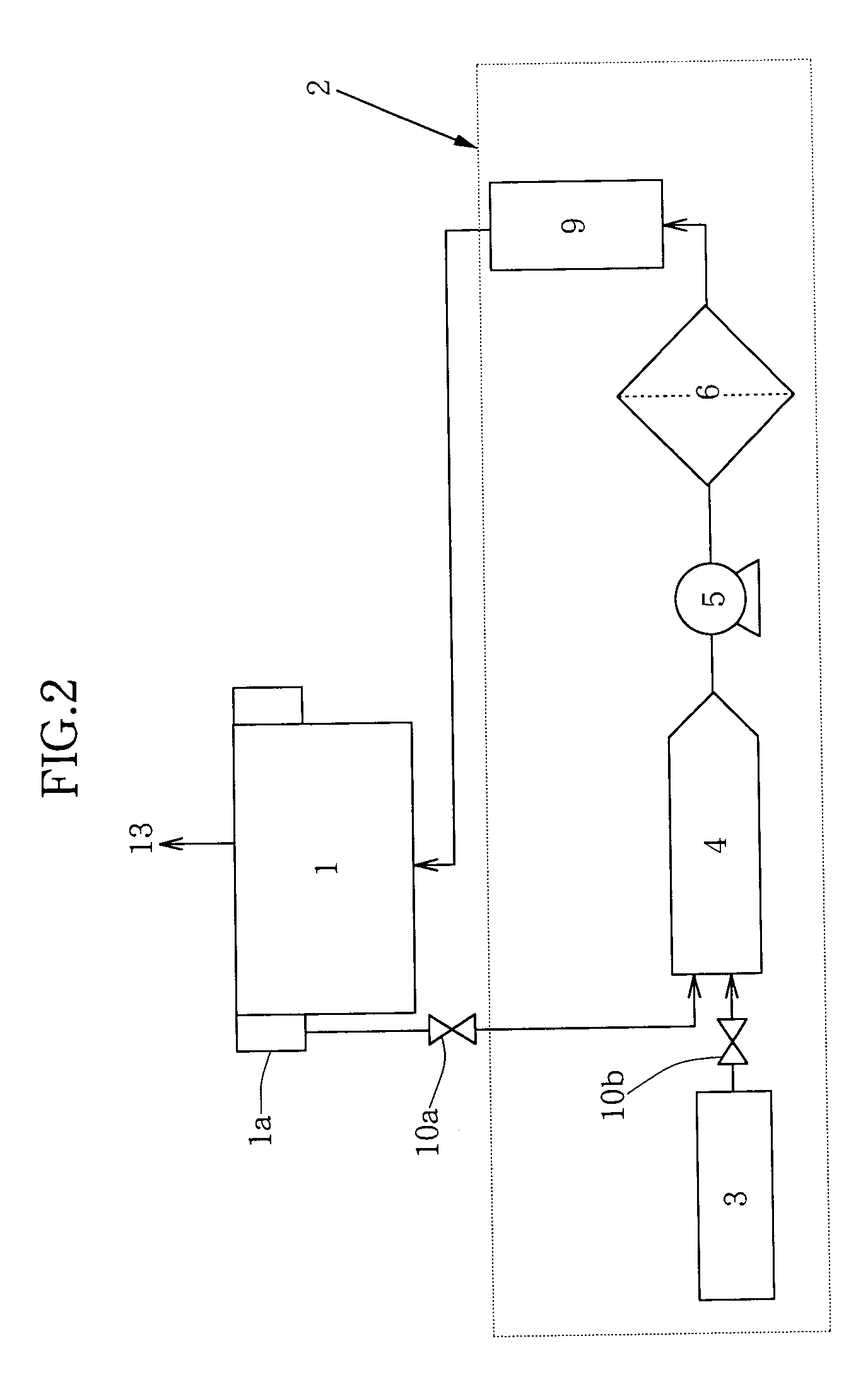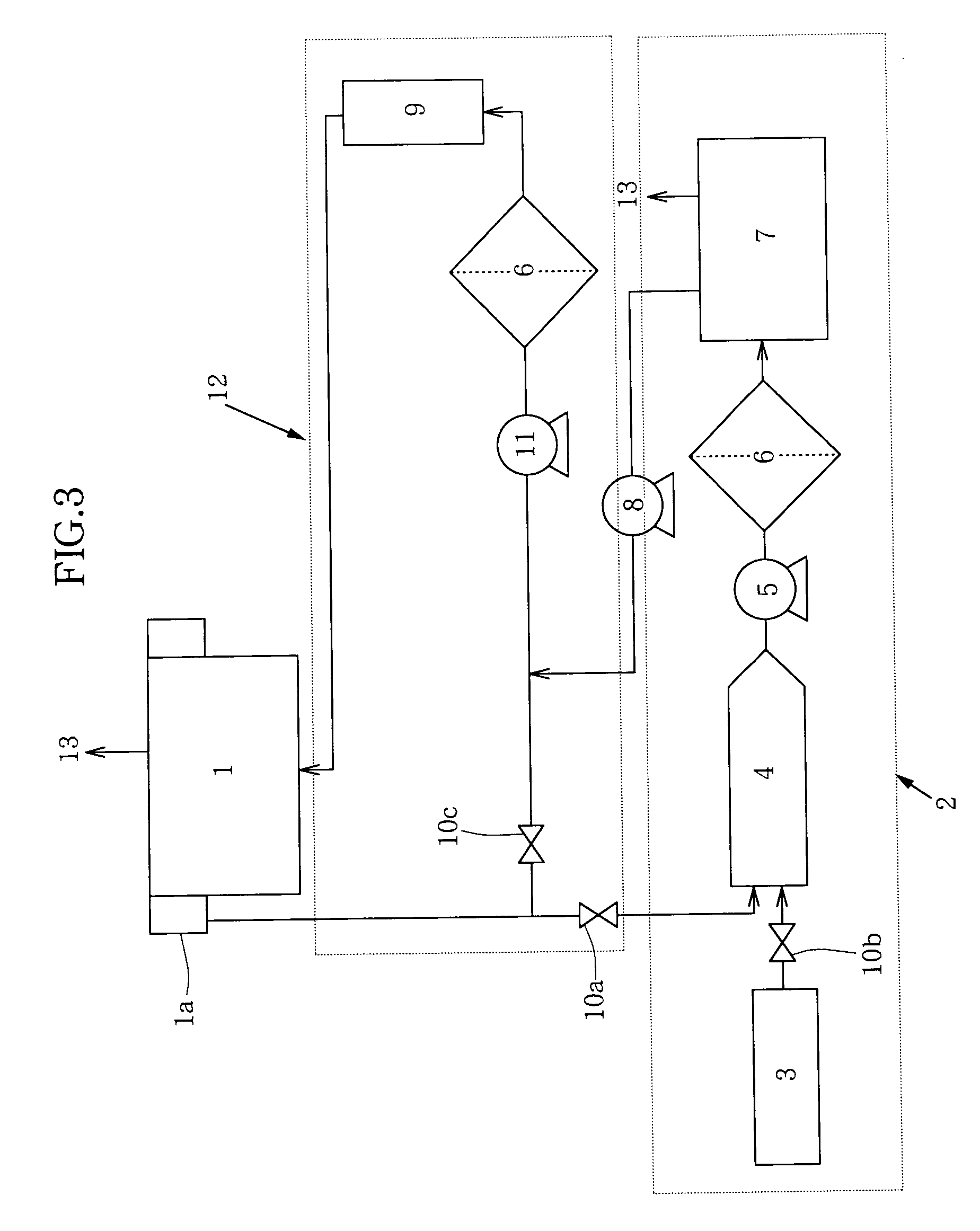Regeneration process of etching solution, etching process, and etching system
a technology of phosphoric acid solution and etching process, which is applied in the field of etching solution, etching process, etching system, can solve the problems of cumbersome end-point control, inability to capture the silicon compound in the phosphoric acid solution, and increase the cos
- Summary
- Abstract
- Description
- Claims
- Application Information
AI Technical Summary
Benefits of technology
Problems solved by technology
Method used
Image
Examples
example 1
[0055] This test is one example of tests in which a phosphoric acid solution was diluted with water to predetermined various concentrations to determine any variations in the concentrations of the silicon compound in the diluted phosphoric acid solutions before and after filtration. The phosphoric acid solution provided for those tests was a phosphoric acid solution which had been used in etching silicon nitride films, had a phosphoric acid concentration of 89% and contained the silicon compound dissolved at 63 mg / kg (hereinafter called "the spent phosphoric acid"). Predetermined amounts of the spent phosphoric acid were placed in flasks, respectively, and were then diluted with distilled water to give phosphoric acid concentrations of 85% (comparative example), 80%, 75% and 70%. The thus-diluted phosphoric acid solutions were thereafter cooled to 20.degree. C. (the amounts of the phosphoric acid solutions of the respective concentrations were set at 100 g or greater). After the pho...
example 2
[0057] The efficiency of removal of the silicon compound depending on variations in the cooled temperature of the spent phosphoric acid was next tested. After four samples of the spent phosphoric acid (676.3 g) were cooled to the temperatures shown in Table 2, respectively, pure water (164.38 g per sample) was added to the respective samples to give a total volume of 840.68 g each, that is, to lower the concentration of phosphoric acid in the spent phosphoric acid to 70%. The resulting mixtures were separately stirred, followed by immediate filtration. As a result, as shown in Table 2, the efficiency of removal of the silicon compound was improved as the cooled temperature of the spent phosphoric acid was lowered. Incidentally, the data of the concentrations of the silicon compound in the water-diluted, spent phosphoric acid samples after filtration were lowered to a similar level as in Example 1 (phosphoric acid concentration: 70%) when the diluted, spent phosphoric acid samples we...
example 3
[0058] This test is one example of tests in which were conducted assuming, for example, such etching treatment as regenerating a phosphoric acid solution, which had been used in an etch bath for a mass fabrication line and contained the silicon compound, as a whole, in other words, as regenerating the phosphoric acid solution batchwise. In the test, an 87% phosphoric acid solution (30 kg) with 71 mg / kg of the silicon compound contained therein was placed in a first test bath. Pure water (21 kg) was added to the first test bath. The phosphoric acid solution and the pure water were agitated into a homogeneous solution, and at the same time, were cooled to 25.degree. C. As a result, the concentration of phosphoric acid was adjusted to 51%. Subsequent to the adjustment, the phosphoric acid solution was transferred from the first test bath into a second test bath through a filter-equipped piping and a pump. In the course of the transfer, any precipitate of the silicon compound was thus f...
PUM
| Property | Measurement | Unit |
|---|---|---|
| Angle | aaaaa | aaaaa |
| Angle | aaaaa | aaaaa |
| Concentration | aaaaa | aaaaa |
Abstract
Description
Claims
Application Information
 Login to View More
Login to View More - R&D
- Intellectual Property
- Life Sciences
- Materials
- Tech Scout
- Unparalleled Data Quality
- Higher Quality Content
- 60% Fewer Hallucinations
Browse by: Latest US Patents, China's latest patents, Technical Efficacy Thesaurus, Application Domain, Technology Topic, Popular Technical Reports.
© 2025 PatSnap. All rights reserved.Legal|Privacy policy|Modern Slavery Act Transparency Statement|Sitemap|About US| Contact US: help@patsnap.com



